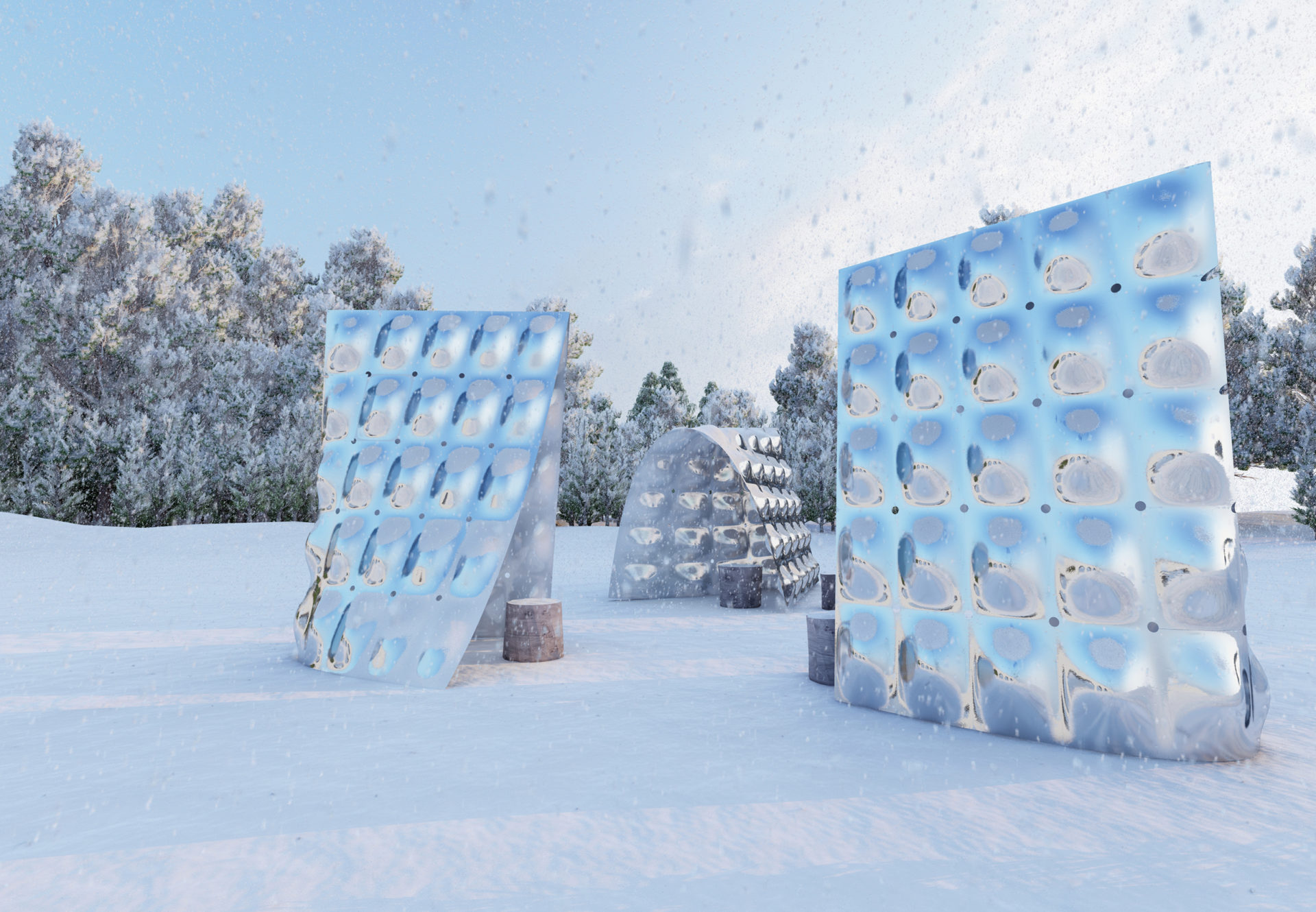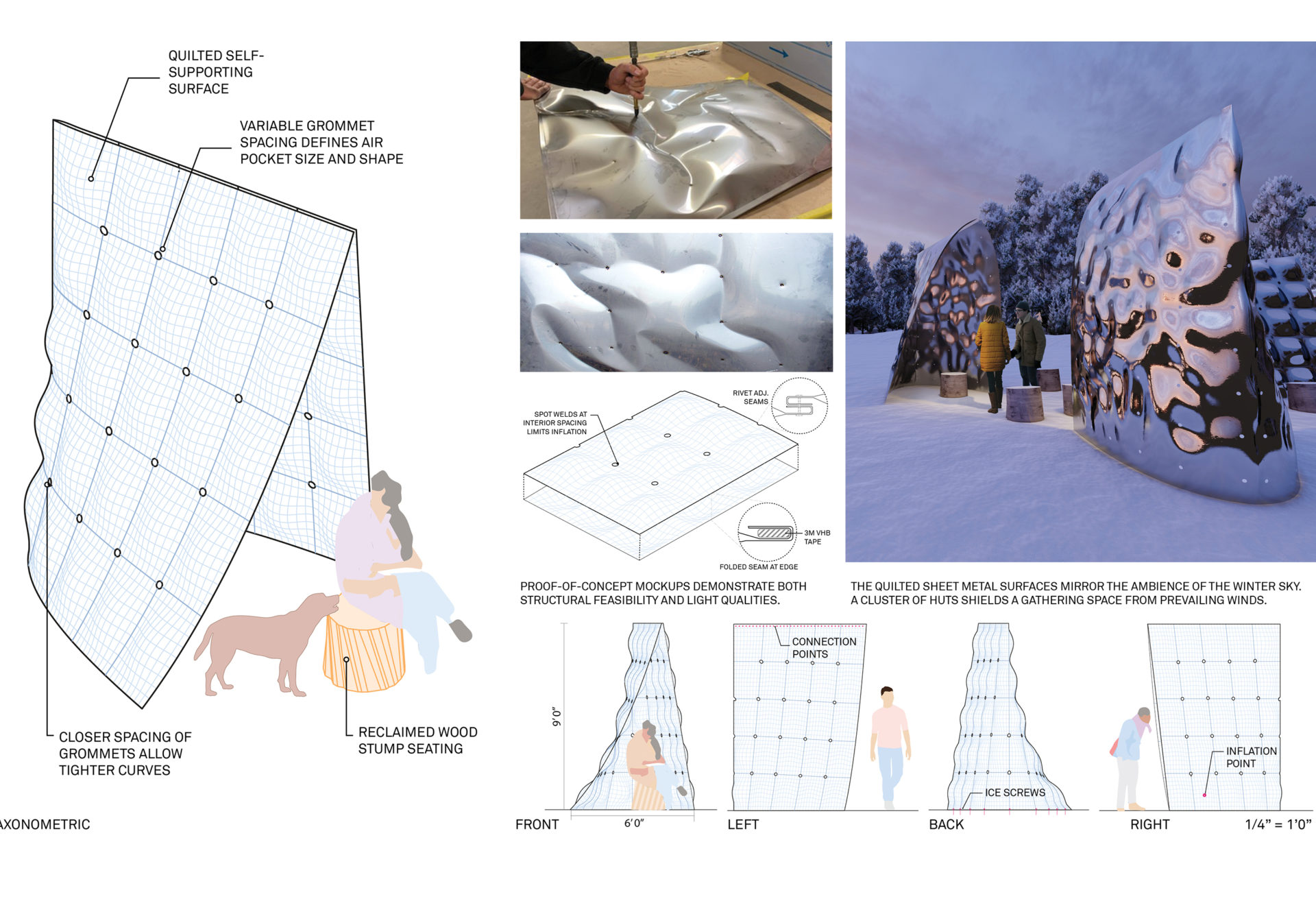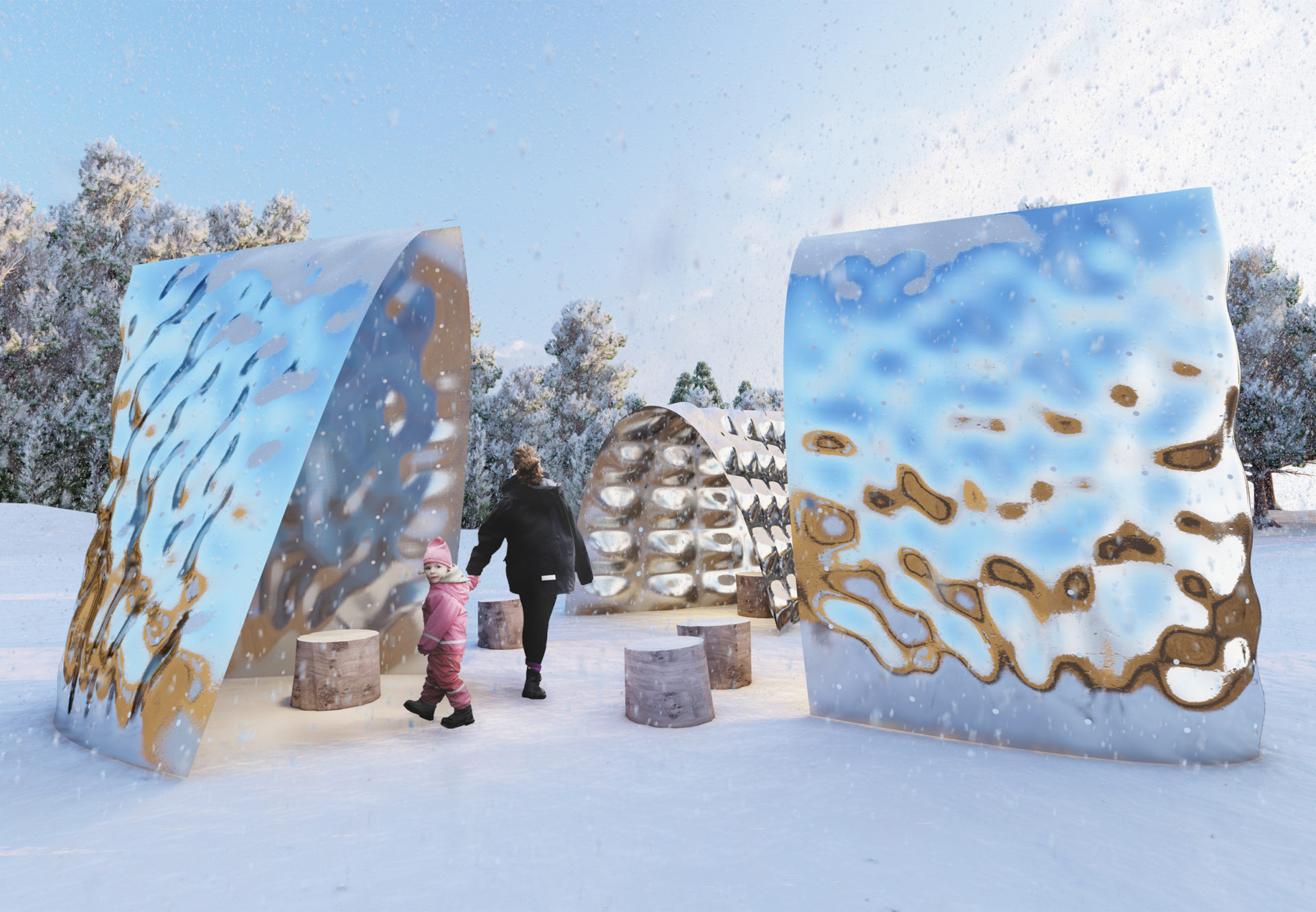How Much Does Your Warming Hut Weigh?
Started in 2009 and supported by the Manitoba Association of Architects, Warming Huts: An Art + Architecture Competition on Ice annually solicits proposals for a warming hut or art installation to be built along the River Trail located on the Assiniboine and Red rivers in Winnipeg.
For the 2021 competition cycle, kdA teamed up with Kansas City-based Zahner, one of the world’s premier light metal manufacturers, to develop a proposal for a pavilion that takes the familiar process of quilting and deploys the technique to create a membrane structure that is self-supporting, variable in its form possibilities, and fully recyclable.
The quilt was one of humanity’s earliest defenses against the world’s most bitter climates, and the art of quilting is historically a noble and necessary craft. Now largely decorative in nature, the quilt remains a practical symbol of ingenuity and endurance.
Inspired by this familiar textile, kdA’s entry builds off the sheet metal process commonly used in cooling jackets and fermentation to create a folded structural quilt: a single sheet, folded and fastened unto itself, delineating an intimate refuge against the extreme Winnipeg winter.
Two sheets of light gauge heat-reflective polished stainless steel are edge folded and spot welded together, creating a flat pillow structure ready to be folded and inflated on site. Titled “Puffer” (after both the structural and aesthetic similarities to the Puffer Jacket, the ubiquitous quilted, padded coat), kDA’s submission acknowledges the paradox of the use of permanent materials in temporary structures and addresses the environmental impact of the project directly: the intimate, human-scaled shelters leave no construction waste and—as they are fabricated from a single material—are completely recyclable.
To paraphrase Buckminster Fuller, we wondered “How much does your Warming Hut weigh?” The team sought tent-like lightness without a framework, a solution that knits together seamed and welded panels into primitive forms, which are then inflated on site. The total mass of each structure is less than 70kg, yielding a material intensity less than 20 kg/m2. The process anticipates construction in an extreme environment: paired sheets are spot-welded that can be flat-packed and assembled while pliable and pinned with ice augers to the site. The pillowing effect is created when panels are inflated and stiffened into rigid forms.
Part sculpture and part pavilion, kdA’s proposal deploys a novel material technique simply and to modest ends: to define a small amount of shelter dynamically engaged with the dramatic light qualities of Manitoba and the River Trail.


